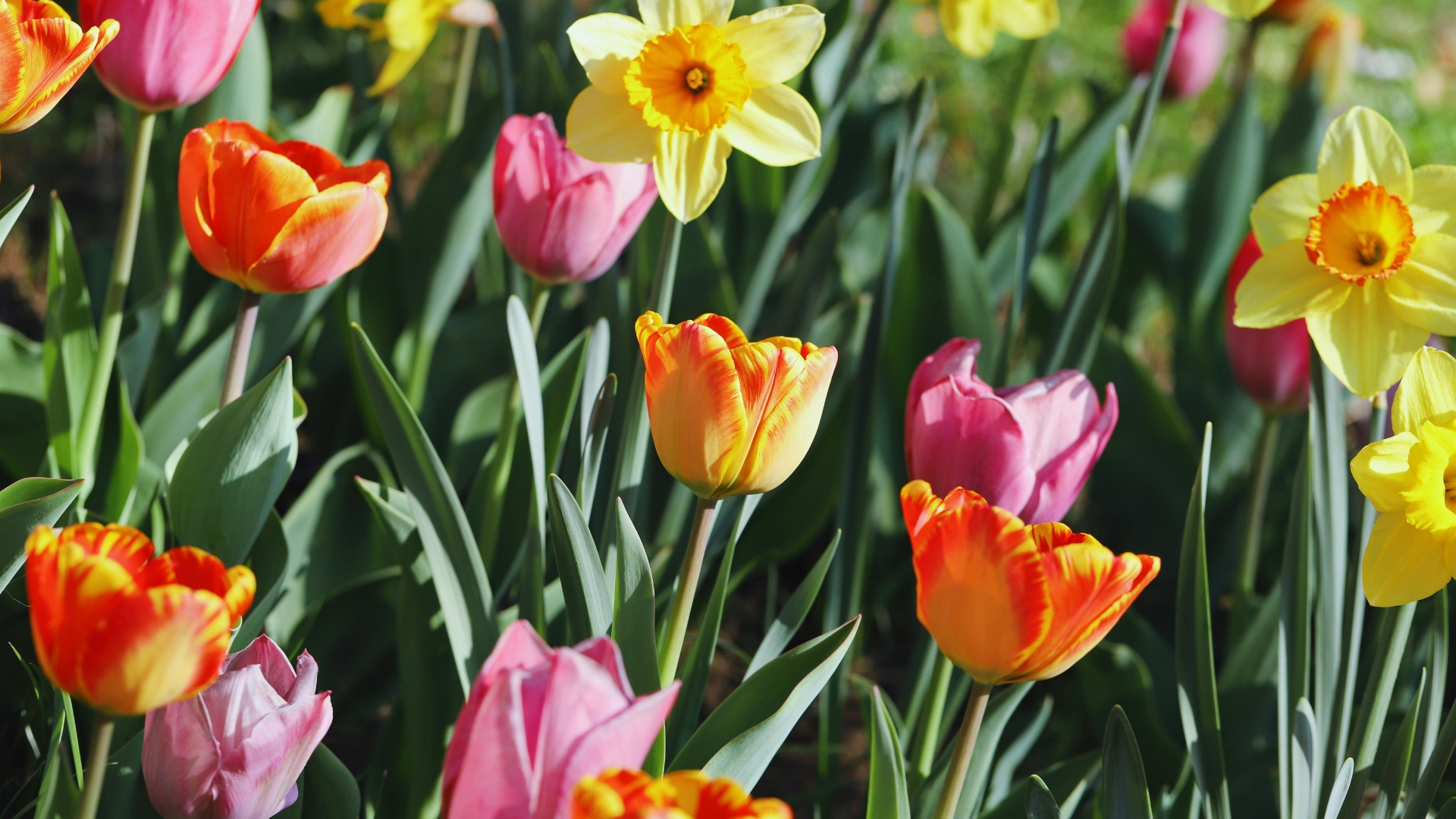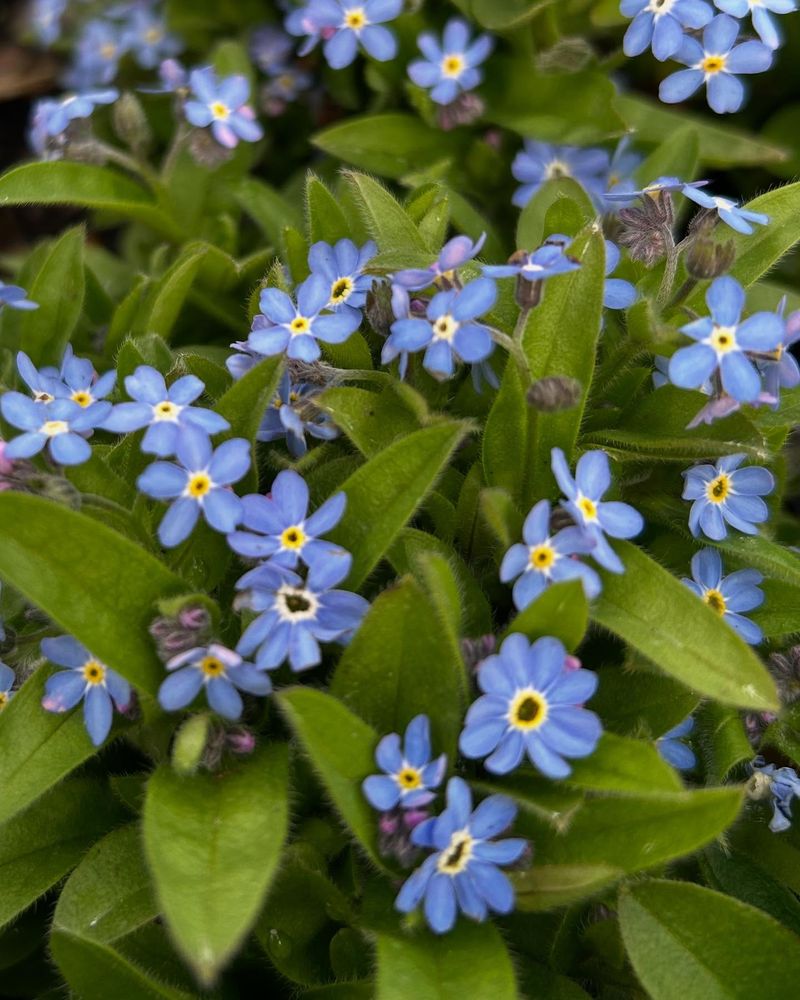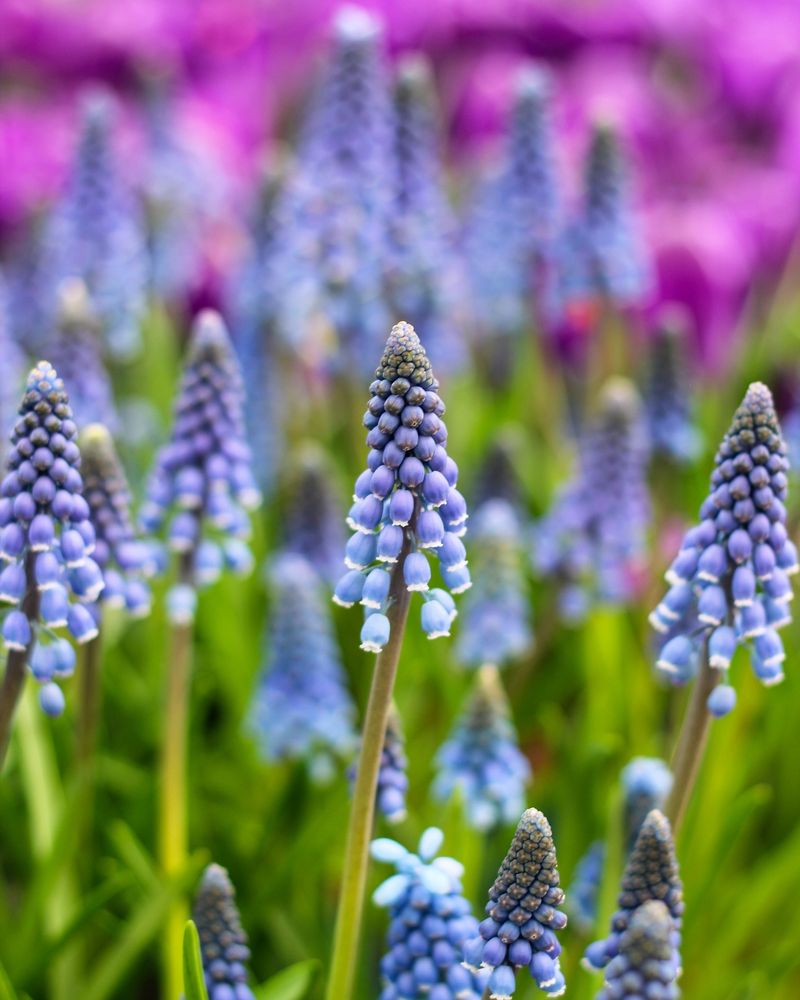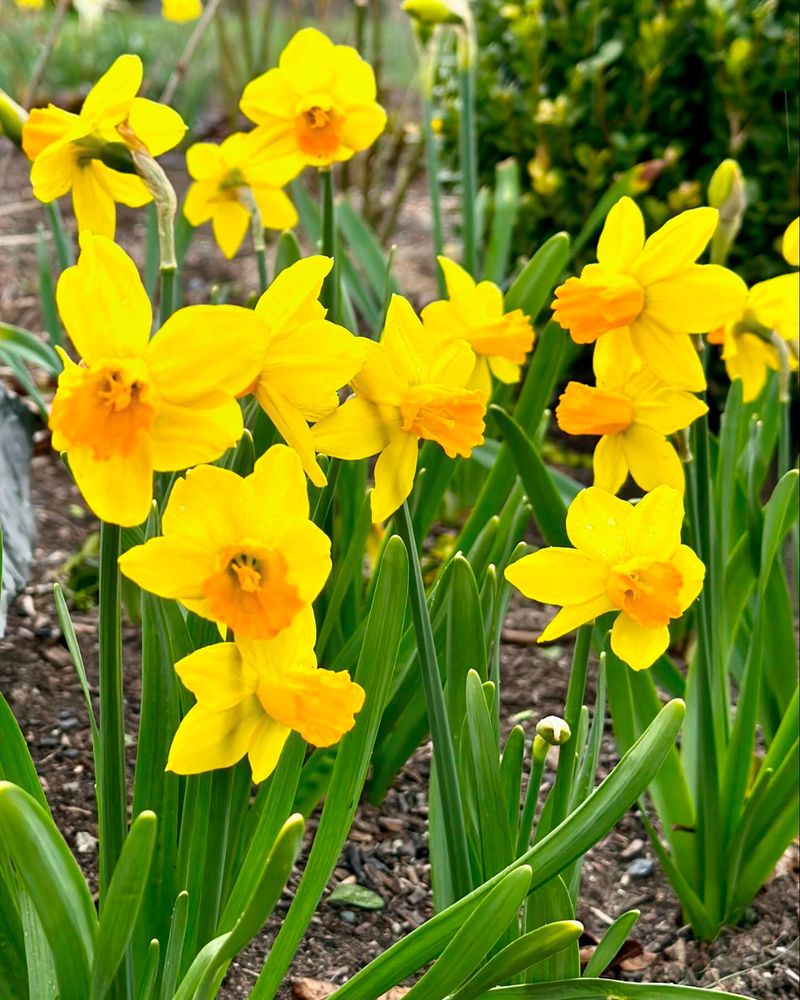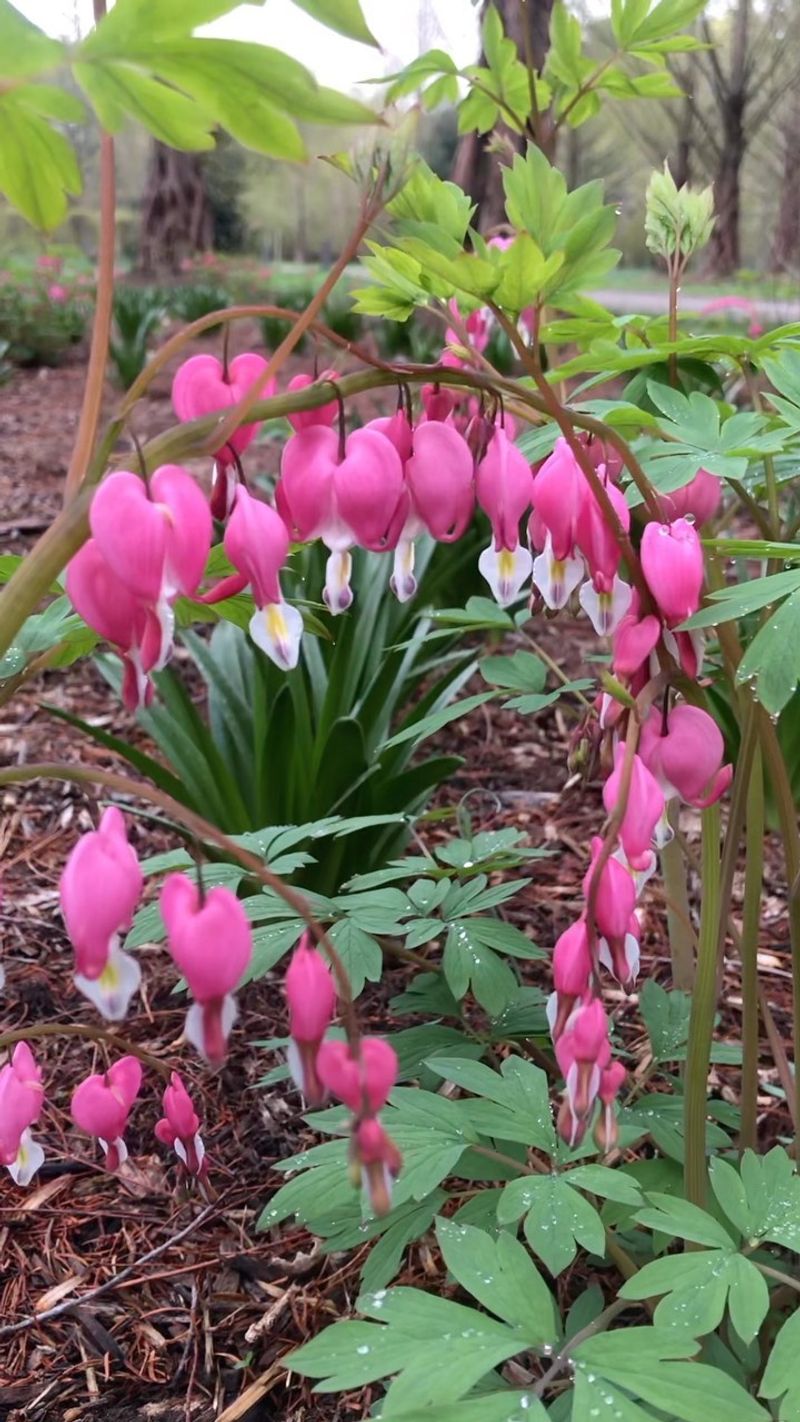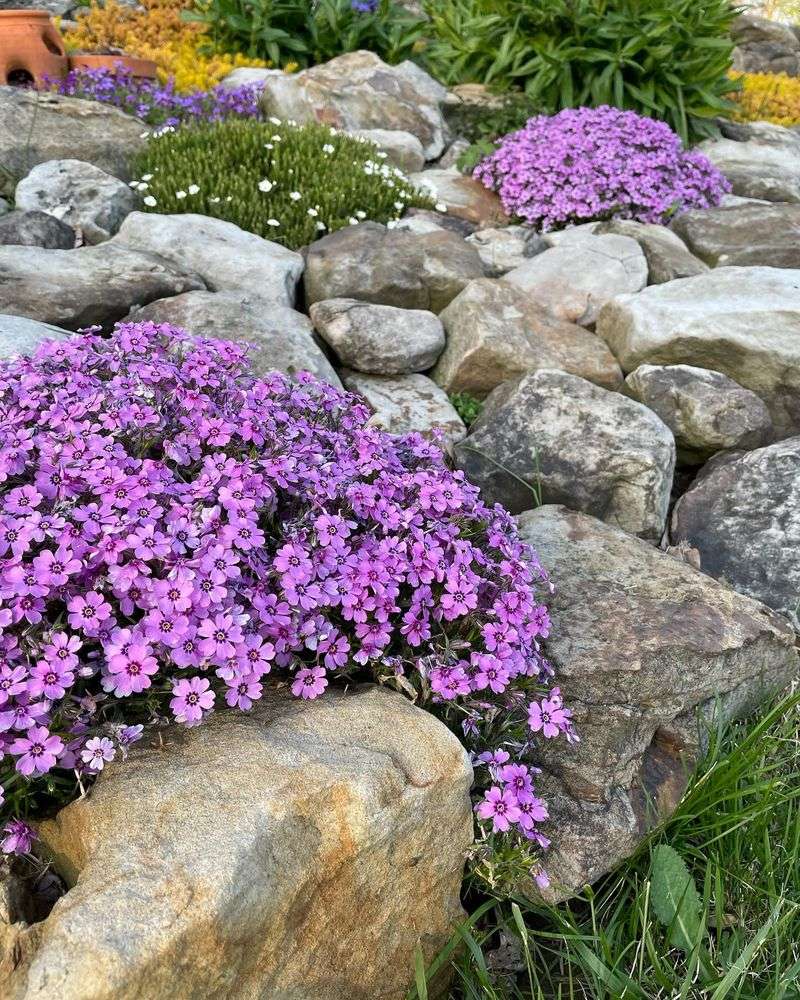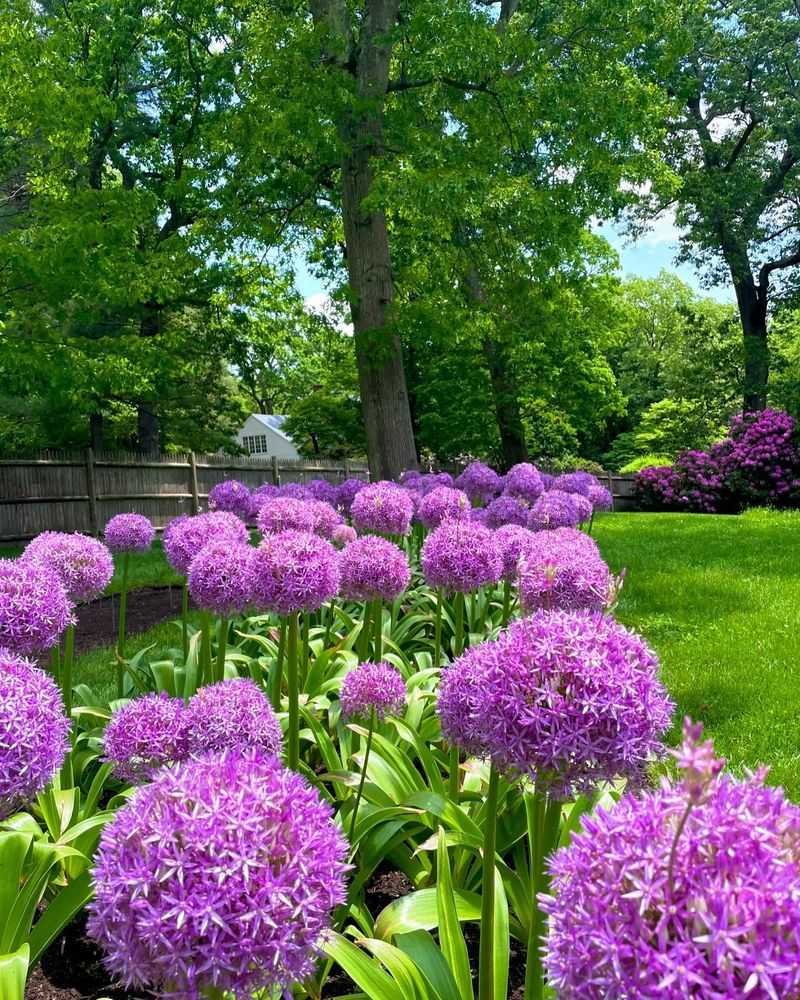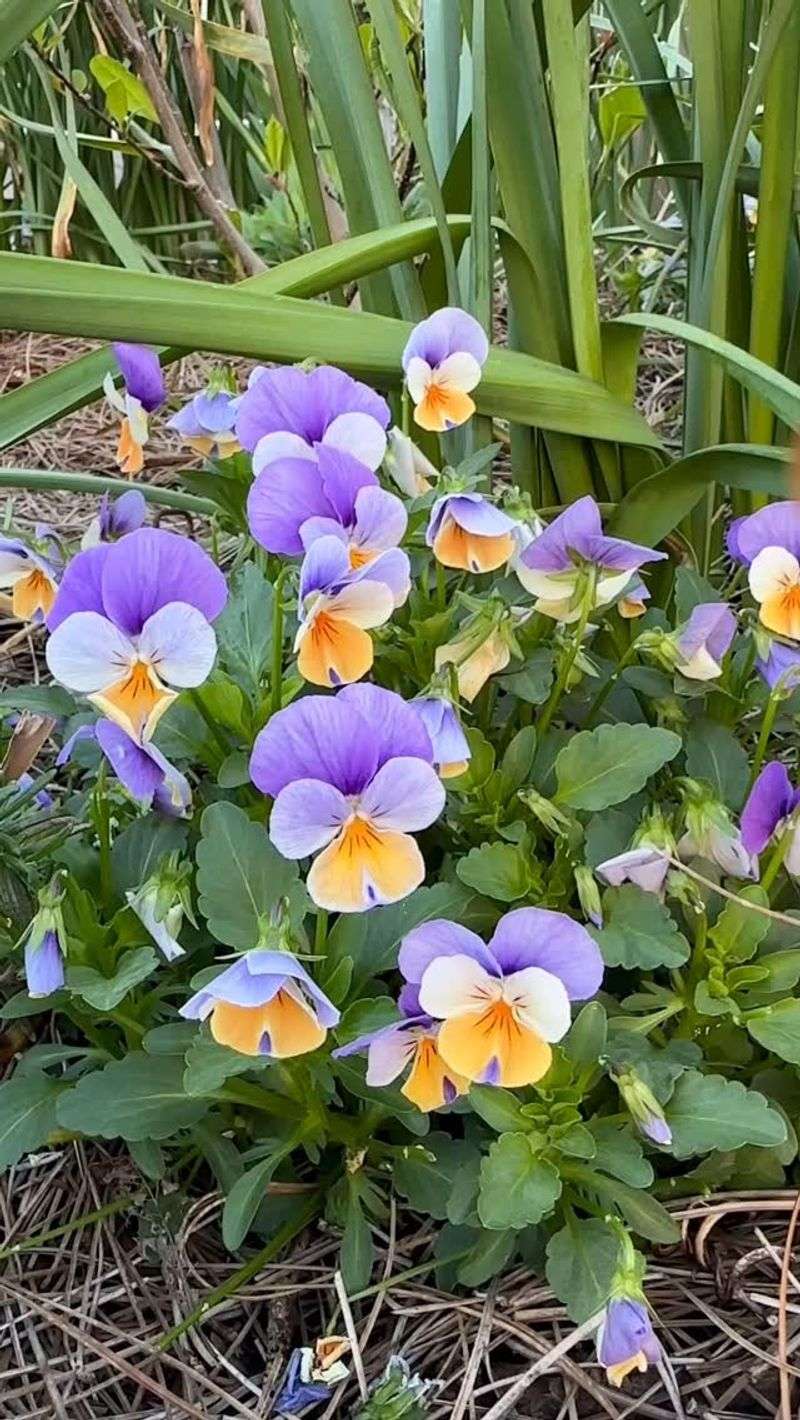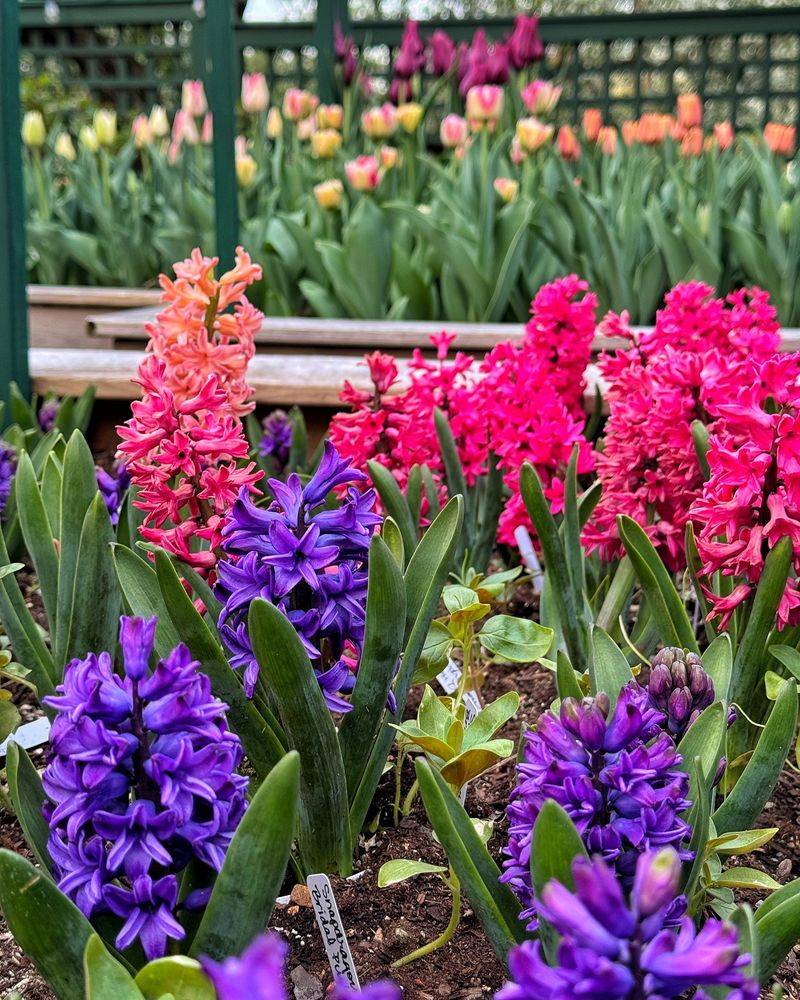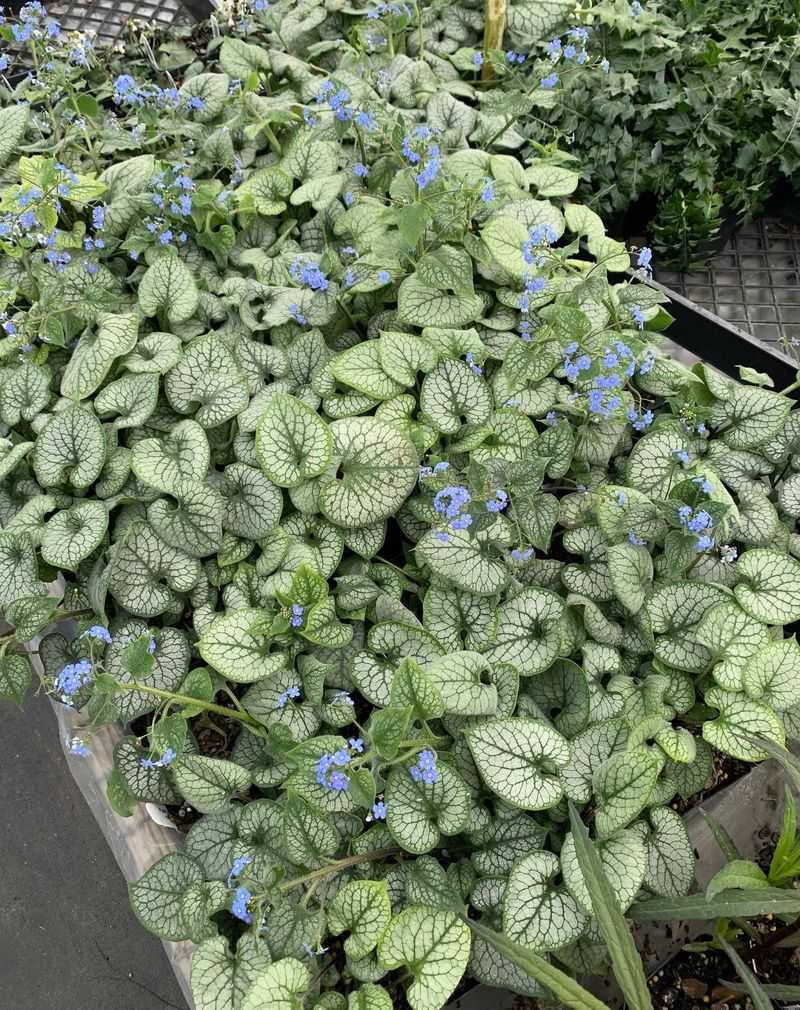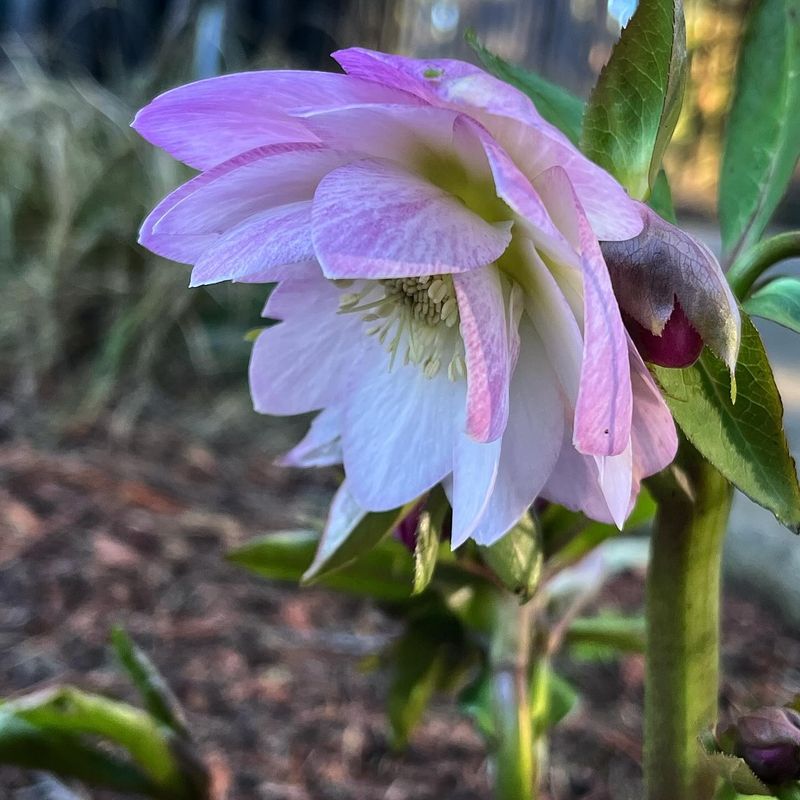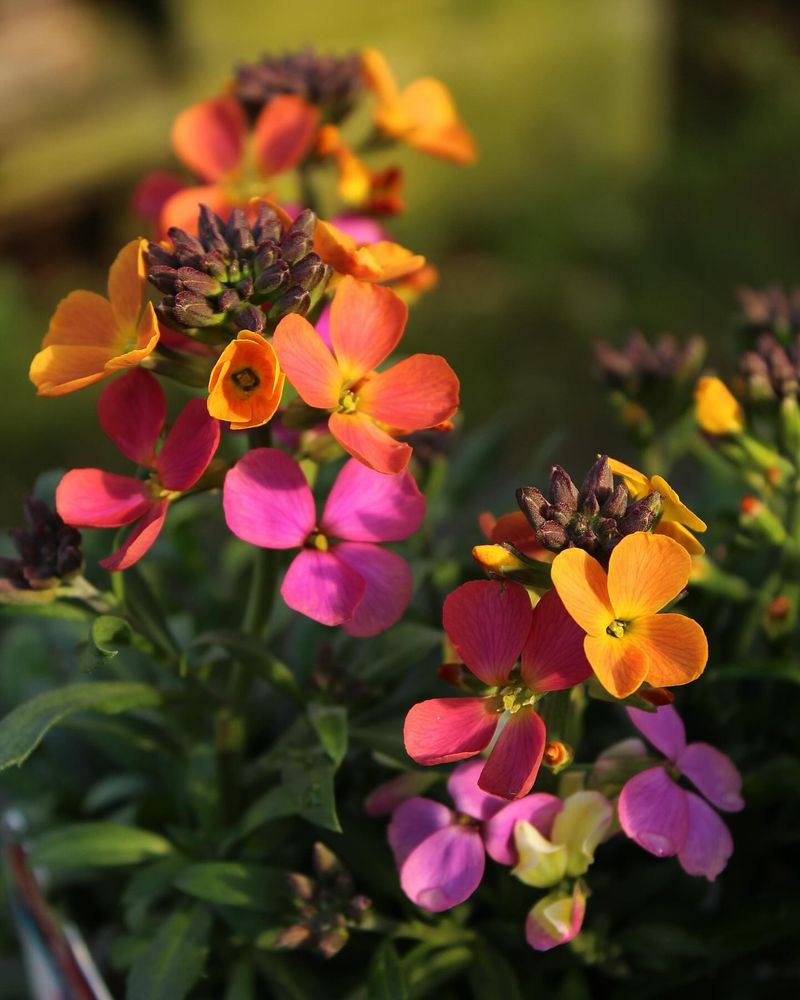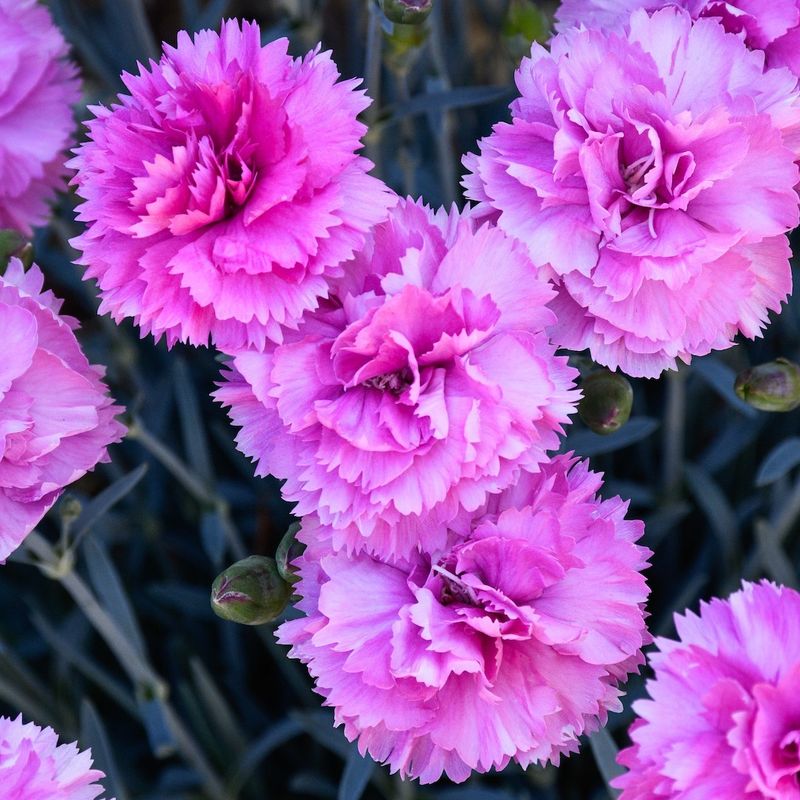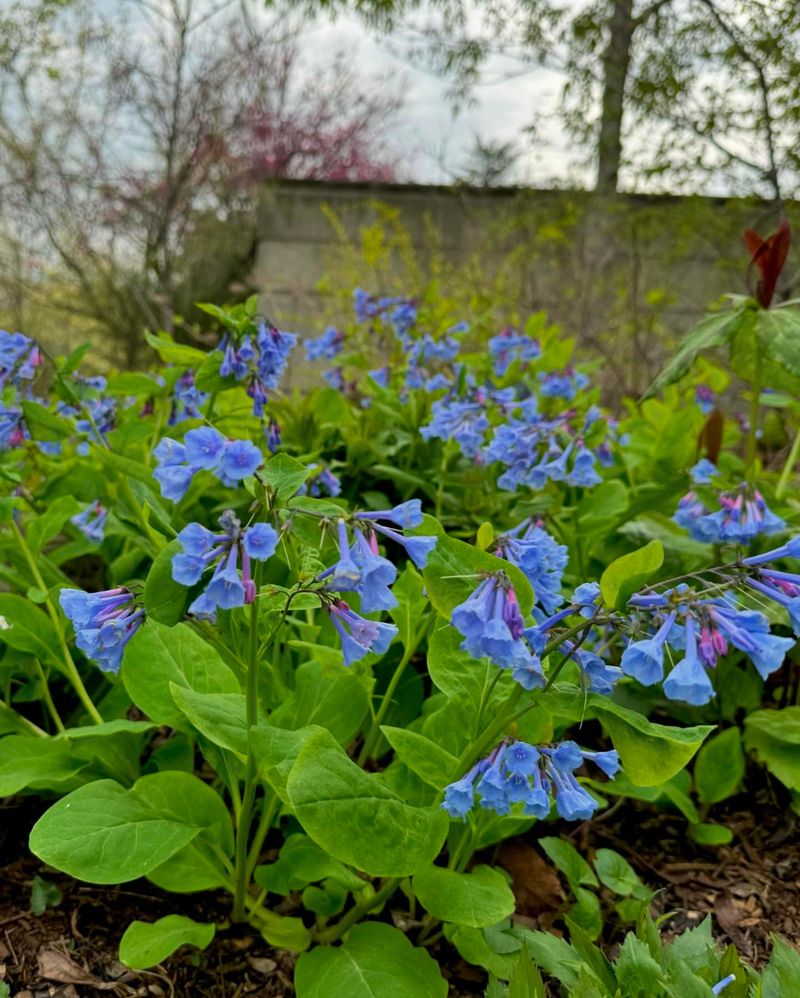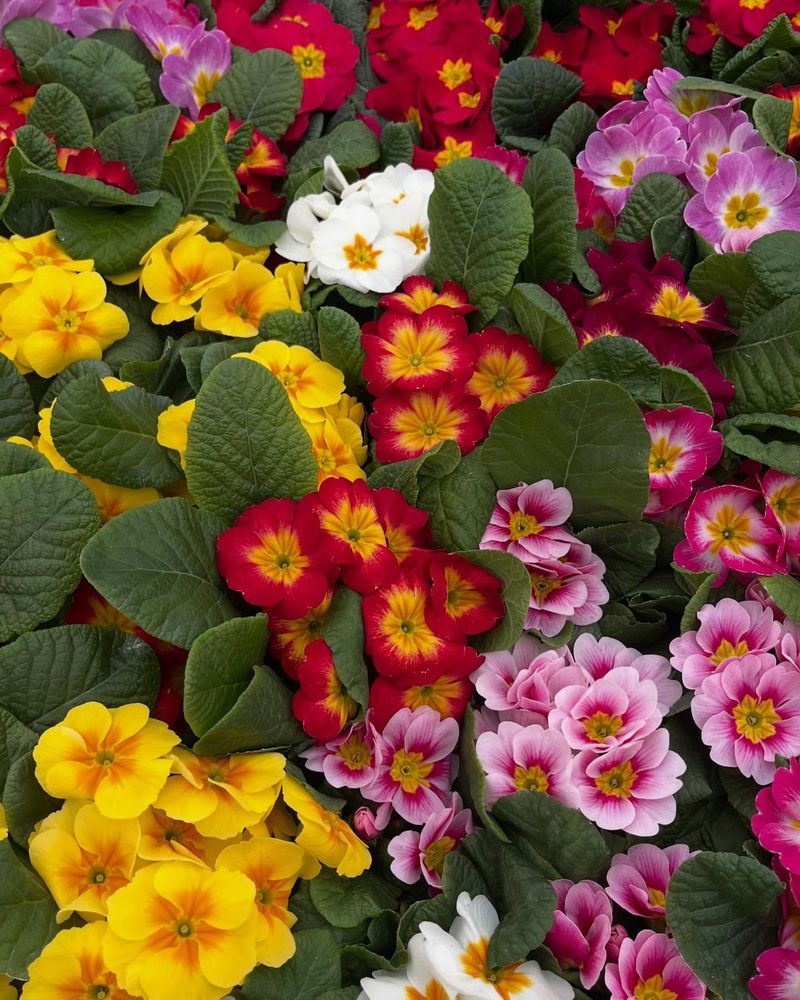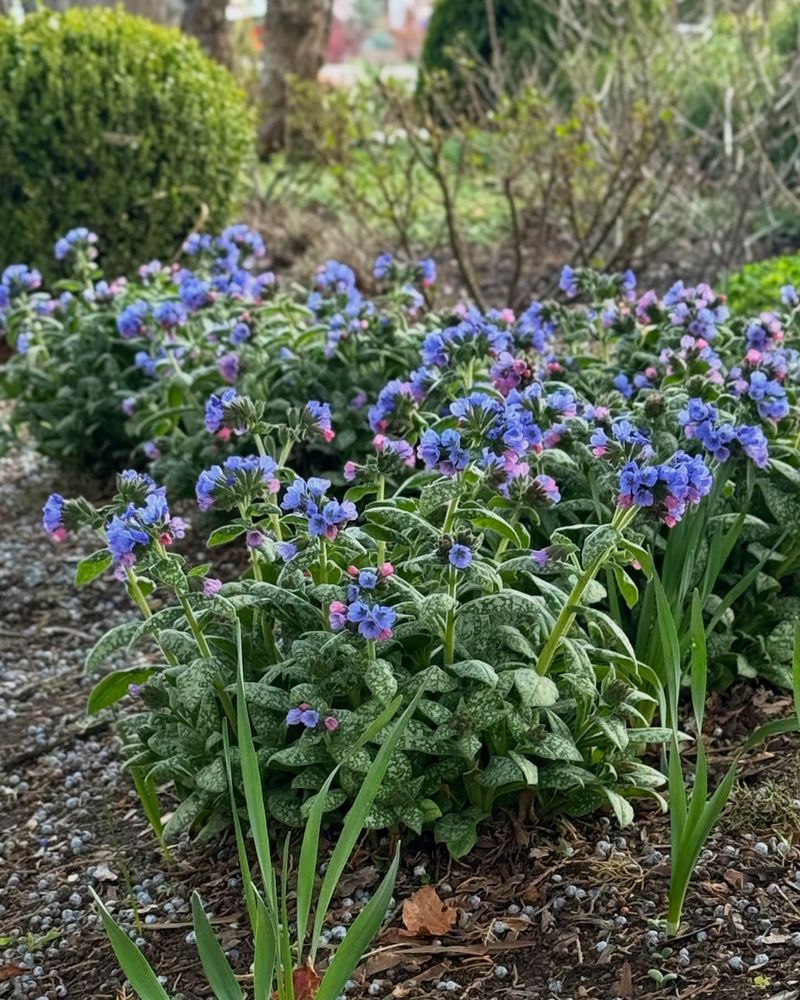Tulips are showstoppers on their own, but pair them with the right plants and you’ve got a spring display that turns heads. I’ve tried a few of these combos myself, and the results were stunning.
These 16 companion plants bring out the best in your tulips while adding texture, color, and a little garden magic. It’s like building a dream team for your flower bed.
Get ready to make your spring garden bolder and more beautiful than ever!
1. Forget-Me-Nots
Those delicate blue clouds floating beneath tulips create magical garden moments! The soft azure carpets make vibrant tulips appear to hover above them, especially stunning with yellow, orange, or red varieties.
Plant these easy-growing annuals in fall or early spring for perfect timing. They’ll self-seed gently throughout your garden, returning year after year without becoming invasive. Their compact growth habit won’t compete with tulip bulbs underground.
2. Grape Hyacinths
Early-blooming grape hyacinths create spectacular harmony with mid-season tulips. Their cobalt blue spikes offer striking contrast, especially alongside pink, white, or yellow tulip varieties.
Unlike some companions, these hardy bulbs multiply effortlessly year after year. Plant them in fall alongside your tulips for carefree spring color. Their slender foliage never overwhelms neighboring plants, making them ideal front-border additions to any spring garden display.
3. Daffodils
Nothing says spring quite like cheerful daffodils dancing among tulips! Their sunny faces bloom slightly earlier, extending your garden’s flowering season and providing continuous color through mid-spring.
Deer and rodents avoid these poisonous bulbs, offering natural protection for neighboring tulips. Choose shorter daffodil varieties like ‘Tête-à-Tête’ to avoid overwhelming your tulips. Their contrasting form and complementary flowering time make them natural garden companions.
4. Pansies
Cool-season pansies offer instant color while tulips develop, then continue blooming alongside them for weeks. Their cheerful faces in purples, yellows, whites, and bicolors create endless creative combinations with any tulip variety.
Low-growing habit makes pansies perfect for edging tulip beds or filling spaces between stems. Plant them in early spring for immediate impact while taller plants develop. Even better, they’ll tolerate light frosts, providing color during unpredictable spring weather.
5. Bleeding Hearts
Arching stems adorned with heart-shaped blooms create romantic contrast to tulips’ formal silhouettes. Their pink or white dangling flowers emerge just as tulips reach peak bloom, creating a magical spring moment in partly shaded areas.
Woodland-loving bleeding hearts thrive in the same rich, well-drained soil that tulips prefer. Their lacy, blue-green foliage continues looking attractive long after flowering, helping hide tulips’ yellowing leaves. Consider the compact variety ‘Luxuriant’ for smaller gardens.
6. Creeping Phlox
Cascading over walls or spreading between tulips, creeping phlox creates a vibrant groundcover that suppresses weeds while adding spectacular color. Star-shaped flowers in pink, purple, white, or blue blanket the plant just as tulips reach their peak.
Drought-tolerant and deer-resistant, this maintenance-free perennial returns reliably each spring. Its shallow roots won’t compete with tulip bulbs below ground. After flowering, the evergreen foliage continues providing attractive texture throughout the seasons.
7. Alliums
Perfectly timed to take center stage as tulips fade, these architectural beauties extend the spring show with their globe-shaped blooms. Their purple spheres hovering above tulips create a layered, professional-looking garden design.
Simply plant allium bulbs alongside tulips in fall for effortless succession planting. The tall, slender stems take up minimal ground space while creating maximum visual impact. Varieties range from tiny ‘Allium moly’ to basketball-sized ‘Globemaster,’ offering options for any garden size.
8. Violas
Hardy little violas start blooming weeks before tulips emerge and continue well after they fade. Their dainty faces in purple, yellow, white, or bicolor patterns create a lovely understory beneath taller spring flowers.
Cold-tolerant and adaptable, violas thrive in the same sunny spots tulips prefer. Plant them in early spring for instant color while tulips develop. Many varieties self-seed gently, returning year after year to create established garden colonies.
9. Hyacinths
Intensely fragrant hyacinths bloom alongside mid-season tulips, adding intoxicating perfume to spring gardens. Their tight clusters of star-shaped florets in blue, pink, white, or purple create textural contrast to tulips’ smooth cups.
Plant these bulbs at the same depth as tulips in fall for a synchronized spring show. Their stocky form makes them perfect for garden borders or container combinations. Position them near walkways or entrances where their sweet scent can be fully appreciated.
10. Brunnera
Heart-shaped silver-speckled foliage creates a shimmering backdrop for colorful tulips. Delicate blue forget-me-not-like flowers appear just as tulips reach peak bloom, adding airy texture to the garden.
Shade-tolerant brunnera thrives in woodland gardens where tulips might struggle. Consider varieties like ‘Jack Frost’ or ‘Silver Heart’ for maximum foliage impact. Their clumping habit stays tidy without spreading aggressively, making them well-behaved garden companions for years to come.
11. Hellebores
Winter-blooming hellebores are already established when tulips emerge, creating garden interest for months. Their nodding flowers in shades of pink, purple, white, or green complement any tulip color scheme.
Evergreen foliage provides year-round structure in garden beds. Plant these shade-tolerant perennials where tulips receive morning sun but afternoon protection. Modern varieties like the Honeymoon series offer upward-facing blooms that show off their intricate patterns better than traditional types.
12. Wallflowers
Spicy-scented wallflowers bloom precisely when tulips do, doubling your garden’s sensory impact. Their clusters of cross-shaped flowers in orange, yellow, purple, or red create vibrant color echoes with corresponding tulip shades.
Short, bushy growth habit makes them ideal for filling spaces between tulip stems. These cool-season bloomers prefer the same sunny, well-drained conditions tulips thrive in. Plant bare-root wallflowers in fall or potted plants in early spring for perfect timing.
13. Dianthus
Spicy-scented dianthus creates fragrant carpets of pink, red, or white beneath taller tulips. Their blue-gray foliage provides attractive contrast even before their flowers open.
Drought-tolerant and sun-loving, these low-maintenance perennials return reliably each year. Many varieties bloom twice—once with tulips and again in fall. Their compact growth habit makes them perfect for garden edges or between taller specimens.
14. Virginia Bluebells
Native woodland beauties emerge alongside tulips in partly shaded gardens. Their nodding clusters of sky-blue trumpet-shaped flowers create magical combinations with pink, white, or purple tulip varieties.
Ephemeral by nature, Virginia bluebells bloom brilliantly then disappear by summer, making room for later-season plants. Their self-seeding habit creates established colonies over time. Plant them where their early spring show can be appreciated before trees leaf out fully.
15. Primroses
Cheerful primroses burst into bloom just as early tulips emerge, creating weeks of combined color. Available in nearly every shade—yellows, pinks, purples, reds, and bicolors—you’ll find perfect matches for any tulip variety.
Low-growing rosettes of crinkled leaves stay attractive all season. Plant them in fall or early spring in rich, moisture-retentive soil. Choose polyanthus types for the brightest colors or native primulas for delicate woodland gardens.
16. Pulmonaria
Spotted or silver-splashed foliage creates season-long interest beneath tulips. Pink buds opening to blue flowers create a remarkable color progression alongside spring bulbs.
Shade-tolerant pulmonaria thrives in woodland settings where many tulips would struggle. Their early bloom time coincides perfectly with mid-season tulip varieties. After flowering, the decorative foliage continues providing garden interest while hiding tulips’ declining leaves.

